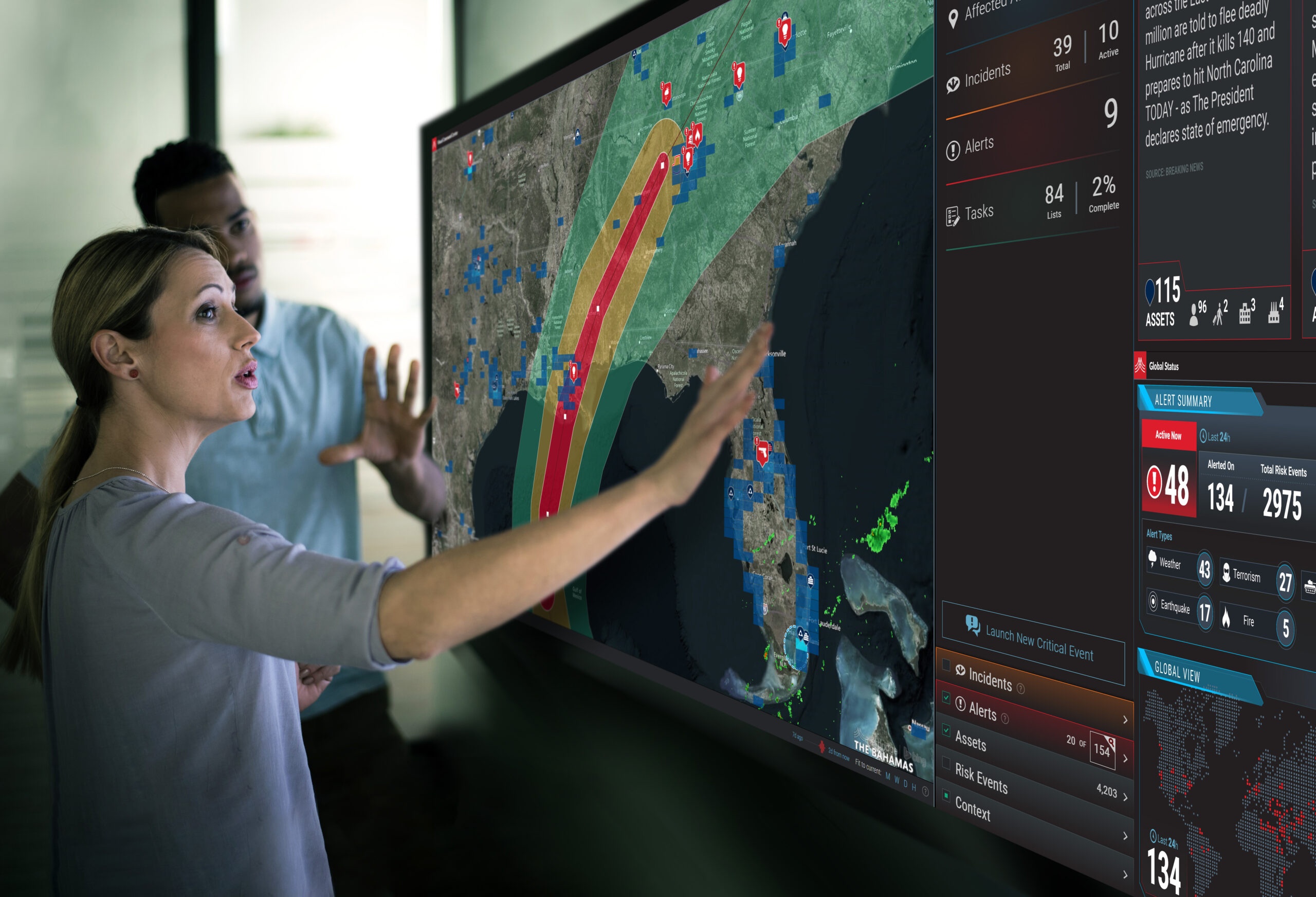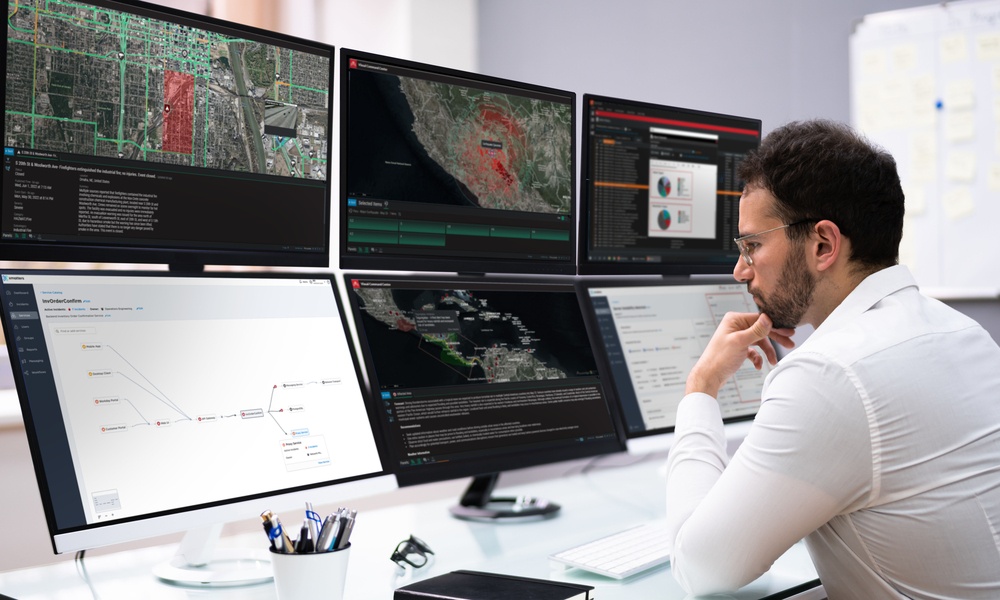Inclement weather response demands attention

By Brian Toolan, Everbridge VP Global Public Safety
Despite technological advances, proactive steps remain to strengthen resilience and keep people safe
Advances in inclement weather and communications technology are everywhere. Real-time information flows, mobile devices are ubiquitous, and forecasting methods have reached unprecedented accuracy.
Yet, the impact of inclement weather on communities across the United States seems to be escalating. Events such as the devastating incident in Maui serve as grim reminders of the ongoing challenges that persist in disaster preparedness and response.
Increasingly, this issue appears to be unique to the United States. While strides are being made across the globe in terms of early warning system awareness and adoption, the U.S. seems to be falling behind. Despite our collective innovation, why do we struggle to keep our communities prepared, informed, and safe when disaster strikes? What solutions can public officials deploy to combat the dangers of severe weather and better protect our people from harm?
Watch an insightful webinar that brings together experts from private and public sector organizations. They engage in a comprehensive discussion on the collective efforts needed to build resilience in the face of such challenges.
Challenges in emergency preparedness and response
It’s fair to say that emergency management and response in the U.S. is not a straightforward, nor politically neutral, discipline.
That said, two things are for certain: The fundamental roles of public safety officials and citizens are clear and uniform. Emergency management and public safety professionals are responsible for coordinating resources, response, and recovery during emergencies and severe weather events. While residents are responsible for taking necessary precautions and actions to keep themselves, and their loved ones safe. Assuming, of course, that emergency management has met its obligation to inform.
After these foundational obligations, things become murkier. Communities, residents, and public safety officials alike grapple with a complex web of challenges.
One fundamental issue lies in the lack of strategic emergency management planning at the national, state, and local levels. This often leads to fragmented efforts that hamper effective response.
Additionally, despite advances in technology, there continues to be a struggle with issuing timely, clear, decisive warnings to the public. This leaves communities with limited time to react.
The lack of consistent coordination between residents and public agencies likely contributes to and exacerbates the problem. Socioeconomic, cultural, and psychological issues hinder effective awareness of the role of emergency management and notification efforts. This also contributes to the highly passive (versus proactive) approach displayed in many recent wildfire disasters. For example, in Maui and the devastating Camp Fire in Paradise, California alerts were delayed, use of sirens withheld, and evacuation procedures rendered ineffective.
Despite these challenges, there are ways to ensure more uniformity and reliability around disaster response. By adopting technology into common practices, we can vastly improve our response to all kinds of inclement weather and disasters such as winter storms, hurricanes, and earthquakes.
Existing technologies for improved disaster notification
The paradox around the highly publicized failures is that emergency alerting and response technology has never been better.
Advanced inclement weather forecasting and modeling techniques enable us to predict severe weather events with unprecedented accuracy. Emergency alert systems, including Wireless Emergency Alerts and NOAA Weather Radio, serve as direct lifelines to the public. Smartphone apps and social media platforms can provide real-time updates that can potentially save lives.
Moreover, real-time risk intelligence feeds can provide pinpoint accuracy that can even enable emergency managers to send location-specific messages to individuals in an immediate or anticipated path of a storm or fire in real-time.
The power of the possible in emergency alerting and disaster management is awe-inspiring. Our standard response practices need to begin capitalizing on this technology for improvement.
How to bridge the gap between technology and action
Here are some proactive steps we can take to better equip communities to handle disasters effectively and decisively:
Break the language barrier
With the prevalence of non-English speakers across the U.S., public safety officials at all levels must account for distributing alerts in multiple languages. At the federal level, this means improving WEA to languages beyond English and Spanish, but at the local level, public officials need to work hard to distribute messages and advisories in multiple languages.
On a similar note, the accessibility gap remains prominent, particularly for vulnerable populations such as those with mental health conditions or disabilities. Assessing this population, and recognizing different communication preferences and needs, are essential amid an emergency.
Invest in disaster response localization
Internationally, we should find inspiration in countries that have managed to successfully bolster their inclement weather and disaster preparedness and response through effective technology utilization and comprehensive processes. Japan’s earthquake and tsunami early warning system stands as a testament to how rapid alerts can save lives. The Netherlands, a country prone to flooding, has invested heavily in flood management infrastructure and collaborative efforts. This showcases how proactive measures can mitigate the impact of disasters.
Many of these countries have adopted Location-Based Technologies (LBAS) to deliver targeted emergency alerts to individuals. LBAS pinpoints an individual’s immediate location, with information relative to their threat level, and in their native language.
It’s time for the U.S. to adopt LBAS and resist the privacy complaints that typically arise. We should be confident in asserting that no compromising data will be transmitted. Public safety should outweigh minor privacy constraints.
Nationalize disaster response
In a similar vein, more coordination around disaster preparedness and response should be unified across state, local, regional, and federal governments. Beyond the obvious risk intelligence and information sharing, the federal government should assert and socialize best practices around a variety of disasters, down to the cadence and expectations around emergency alerts.
Likewise, it’s time to break out of the “no one disaster is the same” way of thinking that has plagued parts of the country where planning and coordination around inclement weather events are not as extensive and tested. We should make a strategic shift toward a comprehensive national “all hazards” planning, preparation, and coordination culture in the U.S. This can help us establish national standards that ensure uniformity in disaster response across states.
Simultaneously, improving awareness and education among residents and travelers about available tools can empower individuals to take timely action. Implementing fundamental messaging and coordination best practices is key to enhancing the efficacy of our response efforts. Plus, better coordination between the public and private sectors can be expected with a more concerted effort to promote disaster awareness, standards, and more.
Next steps towards improving inclement weather preparedness and notification
We must address the existing gaps in our inclement weather and disaster preparedness strategy, processes, and culture. Collaboration between public and private agencies, emergency services, local governments, hospitals, universities, and businesses needs to be strengthened to ensure a unified response. Developing inclusive communication strategies that cater to all segments of the population, including those often marginalized, is paramount.
As we stand at the crossroads of technological advances and ongoing disaster challenges, it is our responsibility to bridge the gap between what is possible and what is actionable. By embracing a comprehensive approach that prioritizes nationwide collaboration, education and best practices, and location-based innovation, we can build a safer, more resilient future for our communities. The time for change is now before the next severe weather event reminds us once again of the importance of preparedness and effective response.
Everbridge is ready with the technology emergency managers need to strengthen public safety during inclement weather and other natural disaster events.
Learn more from an insightful, on-demand webinar. Our guest speakers, including expert security leaders from Amazon and Whole Foods, shed light on the challenges posed by climate variability, and provide insights into strategies for resilience and adaptation.

